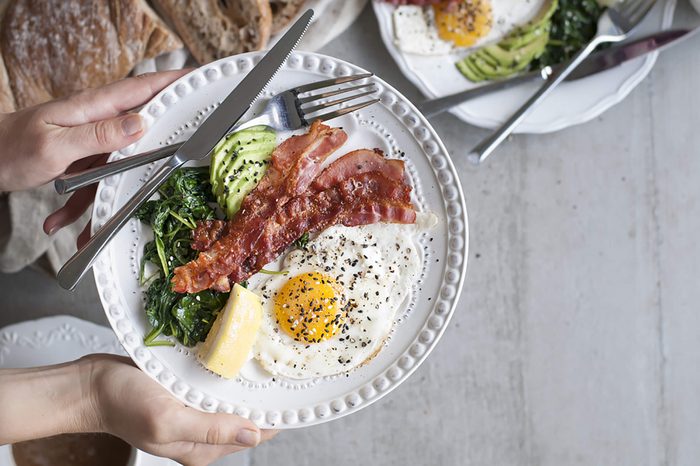
Eat a bigger breakfast than dinner
In a study in the journal Obesity, one group of obese women consumed 700 calories at breakfast, 500 at lunch, and 200 at dinner. Another group ate the same foods but had 200 calories in the a.m. and 700 at night (lunch stayed the same).
After 13 months, the big-breakfast eaters shed 18 pounds, while the big-dinner eaters lost only about seven.
If You Eat This One Breakfast, You’ll Keep Burning Calories All Day Long

Jog for junk mail
Turn clutter into a challenge: for every piece of junk mail you pull from the mailbox each day, do one lap around your house or building, or up and down a flight of stairs. The average person could burn between 35 and 140 calories per session.
Also, check out these weight loss tricks that nutritionists swear by.

Hang a mirror opposite your seat at the table
One study in the Journal of the Association for Consumer Research found that eating in front of mirrors slashed the amount people ate by nearly one-third. Seems having to look yourself in the eye reflects back some of your own inner standards and goals and reminds you of why you’re trying to lose weight in the first place.
Make these 30 tiny diet changes that can help you lose a lot of weight.
Don’t take a whiff
A study published in the journal Cell Metabolism found that, at least in mice, the sense of smell may play a significant role in how the body controls hunger and metabolism. Mice that no longer had a sense of smell burned more calories, lost weight, and showed improved sensitivity to insulin compared to mice who still had an intact sense of smell and ate the exact same amount of food.
To further prove that smell impacts obesity, the researchers created “super-smeller” mice that had a stronger sense of smell. These mice gained weight and became obese. More research is needed to understand how humans can use their sense of smell to control weight.
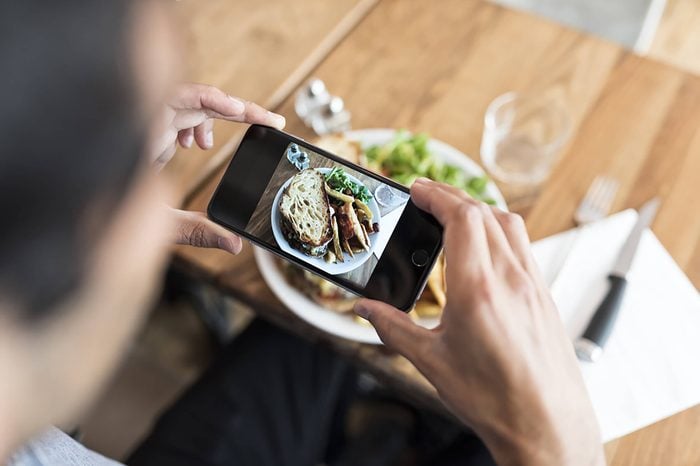
Shoot your food
Instead of writing down every morsel, take a picture of it; a visual account may help curb your intake. “Snapping photos and then looking back at them can make people stop and think before indulging,” says nutritionist Joan Salge Blake, RD, author of Nutrition & You. Even your virtuous salad may “show your extra helping of cheese or deep-fried croutons,” Blake cautions.
A Dermatologist and Dietitian Just Listed the 5 Worst Foods That Age Skin Faster
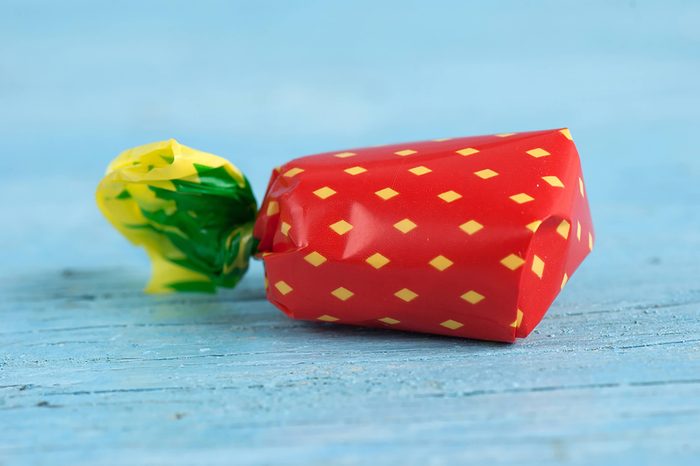
Stick to wrapped candy
A Swiss study found that people ate 30 percent less candy when they had to unwrap it first. Peeling off the wrapper requires effort, which can make noshers eat less.
For more weight loss tricks, read about these 50 breakthroughs doctors wish you knew.
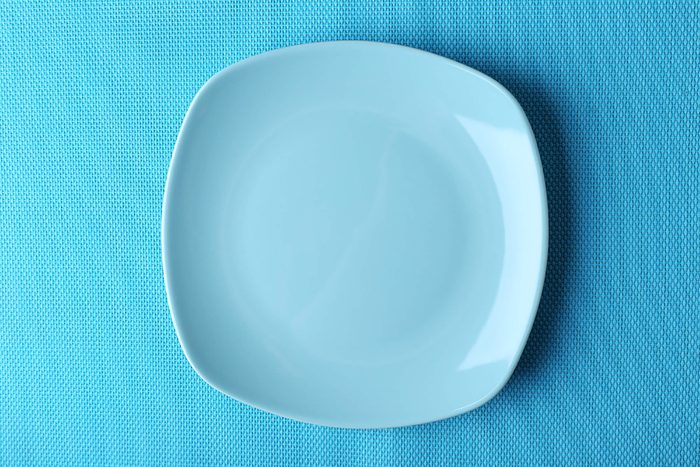
Think about your plate color
Researchers have found that people may eat less food when served on some plates compared with others. For example, one study found that people who were given a white plate at a buffet ate less food than when given a black or red plate the same size. Some color theorists have also said that a blue plate (or even a blue kitchen) will stimulate the sense of hunger less than the color red will.
Check out 13 weight loss tricks even the pros cheat on.
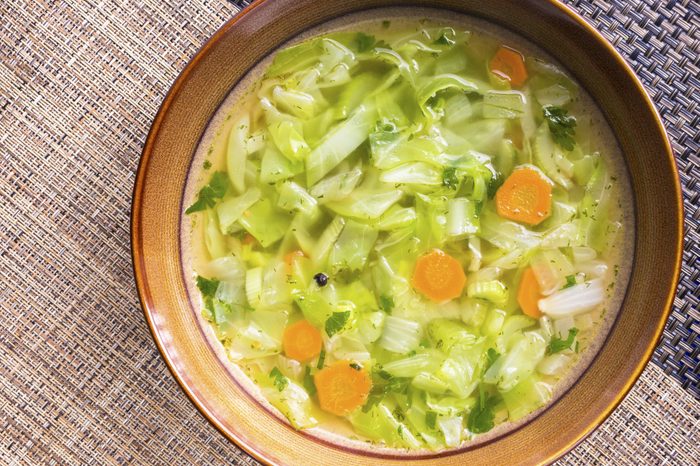
Eat soup before dinner
You might be accustomed to a pre-dinner salad as a calorie-cutting measure—but if leafy greens aren’t your thing, research suggests you can eat soup before dinner and cut down on how much you’ll eat when the main course is served.
Research in the journal Appetite found that people who had a low-calorie, thick soup before lunch ate 20 percent less food during the meal compared to people who ate no soup at all. Plus, people who ate soup didn’t report being hungry or feeling less full at the end of the meal.
These are the best and worst soups for weight loss.
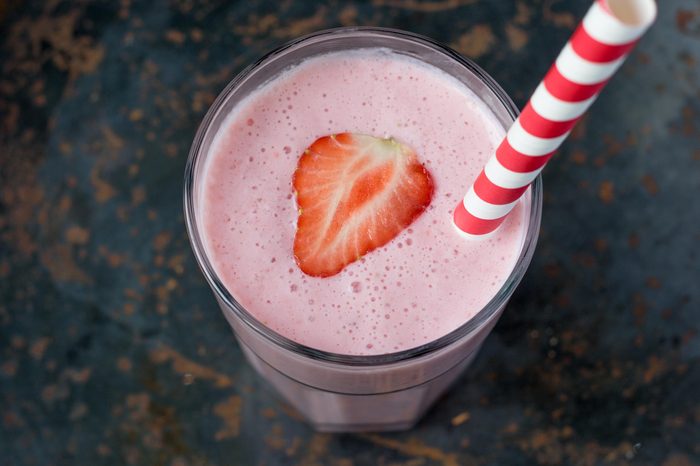
Make your smoothies thicker
Smoothies are considered one of the most efficient ways to eat a lot of fruit, even vegetables, at once, but one element of your smoothie may have more impact on your waistline than you realize: the drink’s density. Research in The American Journal of Clinical Nutrition found the thicker the drink is, the more full a person feels, no matter the smoothie’s calorie amount. This “phantom fullness”—or feeling full because a food is thick, not high-calorie—may help people from reaching for even more calories later, which the feeling of fullness is gone.
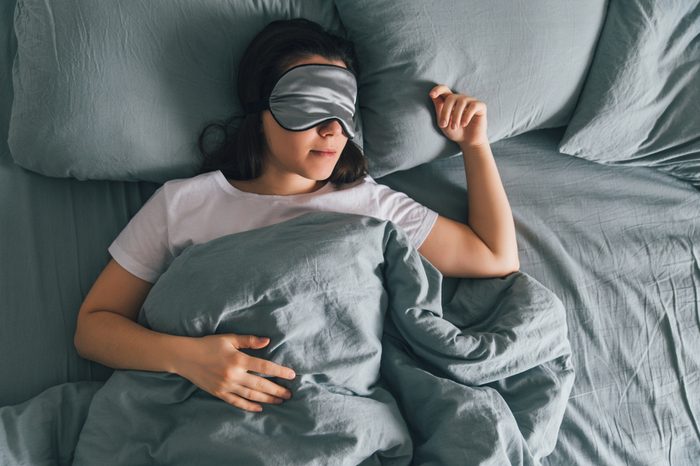
Sleep in a darker room
Getting a full night’s sleep is one of the best ways to control appetite and reduce your risk for weight gain, but the brightness in the room where you sleep may have an impact on your size, too. According to a study in the Proceedings of the National Academy of Sciences of the United States of America, mice who slept in environments with either bright lights or dim illumination (think: a television flickering across the room) eat more compared to mice that snoozed in total darkness.
What’s more, the study found that mice that slept with lights on ate at odd times and had interrupted metabolic signals that influenced how often they were hungry. Cut out all light in your bedroom, or slip on a light-blocking sleep mask to help boost your weight-loss goals.
Follow The Healthy @Reader’s Digest on Facebook, Instagram and Twitter. Keep reading:
- Here’s How Long You Need to Walk to Lower Your Blood Sugar, New Research Finds
- Drinking This Beloved Juice Every Day Could Reduce Your Heart Disease Risk
- Here’s What Neil Patrick Harris Ordered on His First Date with David Burtka
- Here’s What Made Jessica Alba Decide Life “Can’t Revolve Around Career and Work”
- 10 Best Small Treadmills for Your Home or Apartment